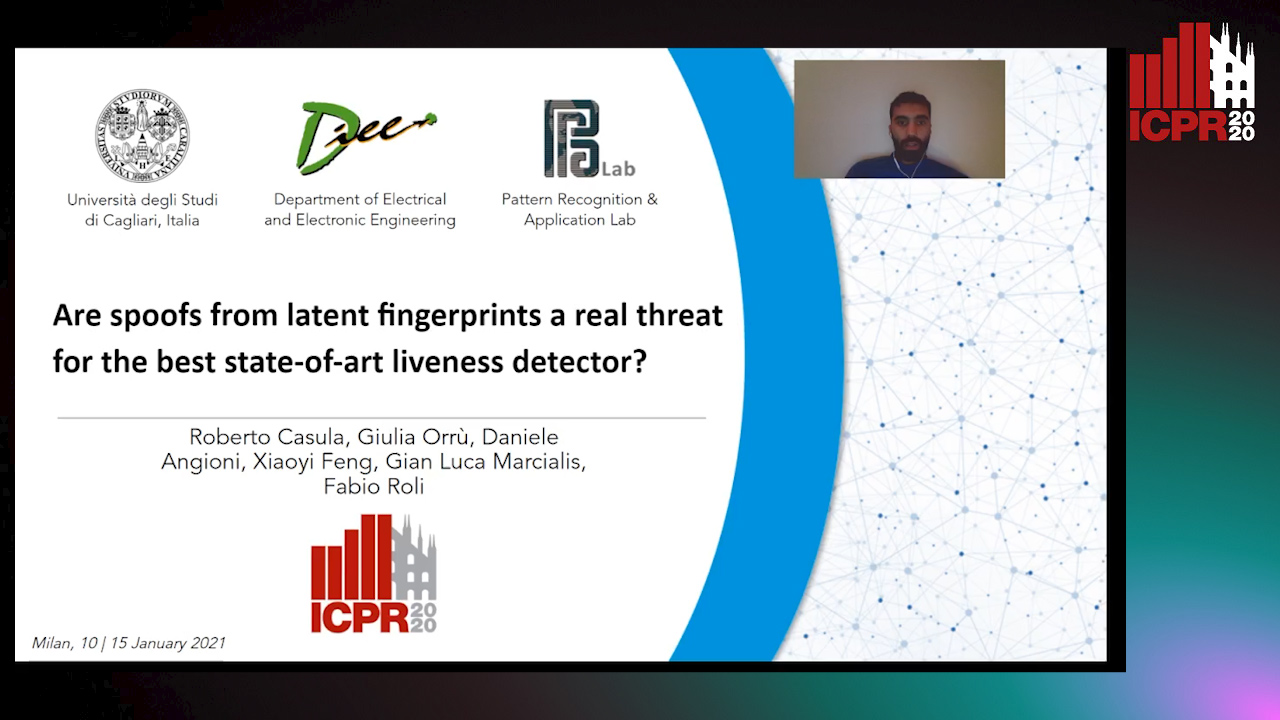Daniele Angioni
Paper download is intended for registered attendees only, and is
subjected to the IEEE Copyright Policy. Any other use is strongly forbidden.
Papers from this author
Are Spoofs from Latent Fingerprints a Real Threat for the Best State-Of-Art Liveness Detectors?
Roberto Casula, Giulia Orrù, Daniele Angioni, Xiaoyi Feng, Gian Luca Marcialis, Fabio Roli

Auto-TLDR; ScreenSpoof: Attacks using latent fingerprints against state-of-art fingerprint liveness detectors and verification systems
We investigated the threat level of realistic attacks using latent fingerprints against sensors equipped with state-of-art liveness detectors and fingerprint verification systems which integrate such liveness algorithms. To the best of our knowledge, only a previous investigation was done with spoofs from latent prints. In this paper, we focus on using snapshot pictures of latent fingerprints. These pictures provide molds, that allows, after some digital processing, to fabricate high-quality spoofs. Taking a snapshot picture is much simpler than developing fingerprints left on a surface by magnetic powders and lifting the trace by a tape. What we are interested here is to evaluate preliminary at which extent attacks of the kind can be considered a real threat for state-of-art fingerprint liveness detectors and verification systems. To this aim, we collected a novel data set of live and spoof images fabricated with snapshot pictures of latent fingerprints. This data set provide a set of attacks at the most favourable conditions. We refer to this method and the related data set as "ScreenSpoof". Then, we tested with it the performances of the best liveness detection algorithms, namely, the three winners of the LivDet competition. Reported results point out that the ScreenSpoof method is a threat of the same level, in terms of detection and verification errors, than that of attacks using spoofs fabricated with the full consensus of the victim. We think that this is a notable result, never reported in previous work.